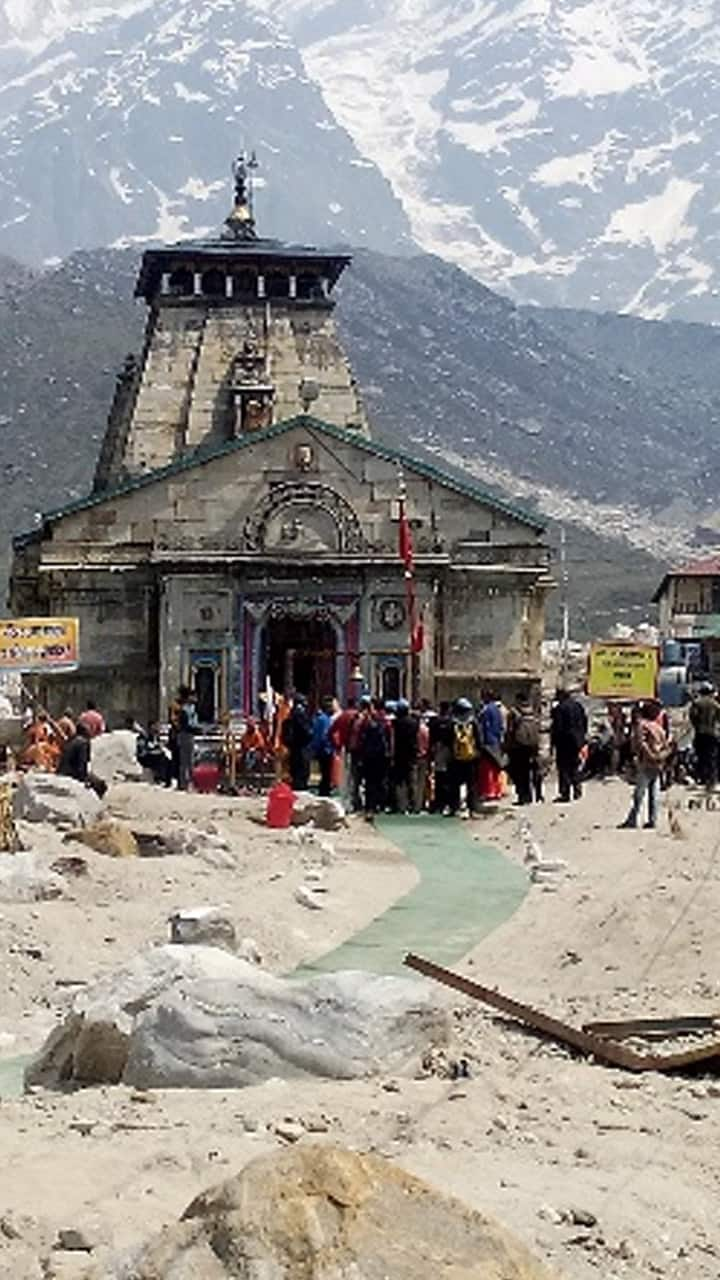From Hampi to Madurai, these ancient temples have withstood the test of time — Explore the architectural wonders, legends, and spiritual importance of the 7 oldest temples in India.
India is known for its age-old religious sites and architectural wonders. Millions of pilgrims flock to these ancient temples annually to worship their deities or experience the spiritual vibes.
In addition to shimmering domes and intricate details, these sacred temples come with a plethora of legends and historical significance. We wanted to dive into some of India's oldest temples and uncover the incredible secrets behind them.
Hampi
Located in the ruins of Hampi, a UNESCO World Heritage Site in the Karnataka state, the 7th-century Vishnu Temple has several incarnations of Lord Vishnu and his avatars. The 16th-century Virupaksha Temple is a Hindu temple dedicated to Lord Shiva, situated on the southern banks of the Tungabhadra River.
The old-world charm of the area has attracted devotees from all over the world. Over the centuries, many rulers have patronized the temples and expanded their structures. The temples are still visited by pilgrims who revere all the deities and respect many spiritual traditions.
Madurai
The city of Madurai is a 6th-century BC city and is considered the oldest continuously inhabited cities in South India. It is home to some of the oldest temples in the country, such as the Meenakshi Amman Temple and Thirumalai Nayakar Mahal.
The Madurai Meenakshi Amman Temple is a significant religious and architectural site with two golden-roofed towers, four gopurams, and intricate stone carvings. The temple complex also has 12 vast complexes, and its construction is a testament to the inventive genius and skill of Indian masons and sculptors.
Visitors flock to the temple for its stunning architecture and spiritual vibes – they come to witness the magical sunset over the temple complex, a view that cannot be forgotten.
Rameswaram
The holy city of Rameswaram is situated in the Gulf of Mannar and is home to the magnificent Ramanathaswamy Temple. This ancient temple has been standing since the 12th century and was constructed during the Chola dynasty.
The temple has several shrines and halls with pillars decorated with carvings of demons, humans, and gods. It is believed that Lord Rama offered his prayers to Lord Shiva here and dedicated the temple to absolve the sins of killing Ravana. The temple has become a pilgrimage site over the centuries, and around five lakh pilgrims visit the temple annually.
Thanjavur
The city of Thanjavur, formerly Tanjore, has always had a spiritual influence on its locals and foreigners alike. The Brihadeeswarar Temple, built in 1010 AD, is located in the center of the city. It is recognized as one of the great architectural wonders of India and serves as a UNESCO World Heritage Site.
The temple stands on a 12 feet tall base and is built completely of granite. Although the exterior is less ornate, the interior domes are intricately detailed. The temple is an embodiment of the refined art, craft, and sculpture of the Chola dynasty.
GVaranasi
GVaranasi is deep-rooted in Hindu mythology and is one of the oldest inhabited cities in the world. The Kashi Vishwanath Temple is an important spiritual landmark of the city, standing tall since the 18th century.
The temple has intricate carvings and towering spires with intricately carved black stone with gold copper plating. It serves as a major pilgrimage hub and people come to take a holy dip in the Ganges and seek divine blessings.
Kedarnath
The Kedarnath Temple is situated in the Garhwal Himalayas and is dedicated to Lord Shiva. The temple stands at an altitude of 11,755 feet, making it the highest of the twelve jyotirlingas.
The temple reopened to the public in 2018, after a devastating flood in 2013 caused by heavy rains. Due to its remote location and the need for an arduous trek, the temple sees only a few pilgrims visit its hallowed grounds each year.
Badami
Badami is a town in the Bagalkot district of Karnataka and is home to several ancient caves. One of the most significant sites here is the Bhootyathrayana Temple, built in 550 AD by the Chalukyas during their rule.
The temple is dedicated to the Trimurti, the Hindu trinity of Brahma, Vishnu, and Shiva. It comprises of two main mandapas, along with four vimana towers. The walls of the temple are embellished with detailed sculptures depicting various gods.
India is a treasure trove of ancient sites and temples with deep-rooted mythology and legends. As these secrets are uncovered, more and more people recognize the incredible miracle that these temples still stand tall and continue to spread the divine light even in modern times.
Last Updated Jun 25, 2023, 6:18 PM IST











![Salman Khan sets stage on fire for Anant Ambani, Radhika Merchant pre-wedding festivities [WATCH] ATG](https://static-ai.asianetnews.com/images/01hr1hh8y86gvb4kbqgnyhc0w0/whatsapp-image-2024-03-03-at-12-24-37-pm_100x60xt.jpg)
![Pregnant Deepika Padukone dances with Ranveer Singh at Anant Ambani, Radhika Merchant pre-wedding bash [WATCH] ATG](https://static-ai.asianetnews.com/images/01hr1ffyd3nzqzgm6ba0k87vr8/whatsapp-image-2024-03-03-at-11-45-35-am_100x60xt.jpg)



